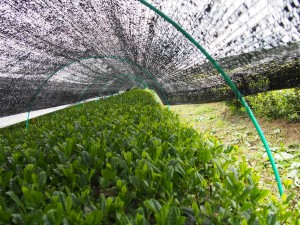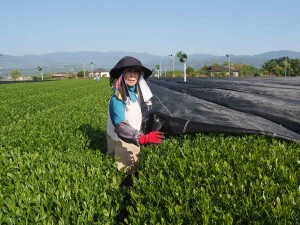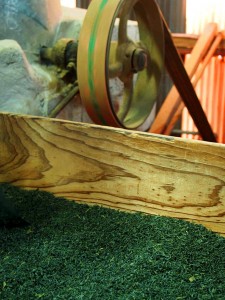The glossary for a world to discover
Tea preparation is a simple, yet at the same time complex process. As such, we would like share our knowledge, so that people can get a better insight into the fascinating world of tea.
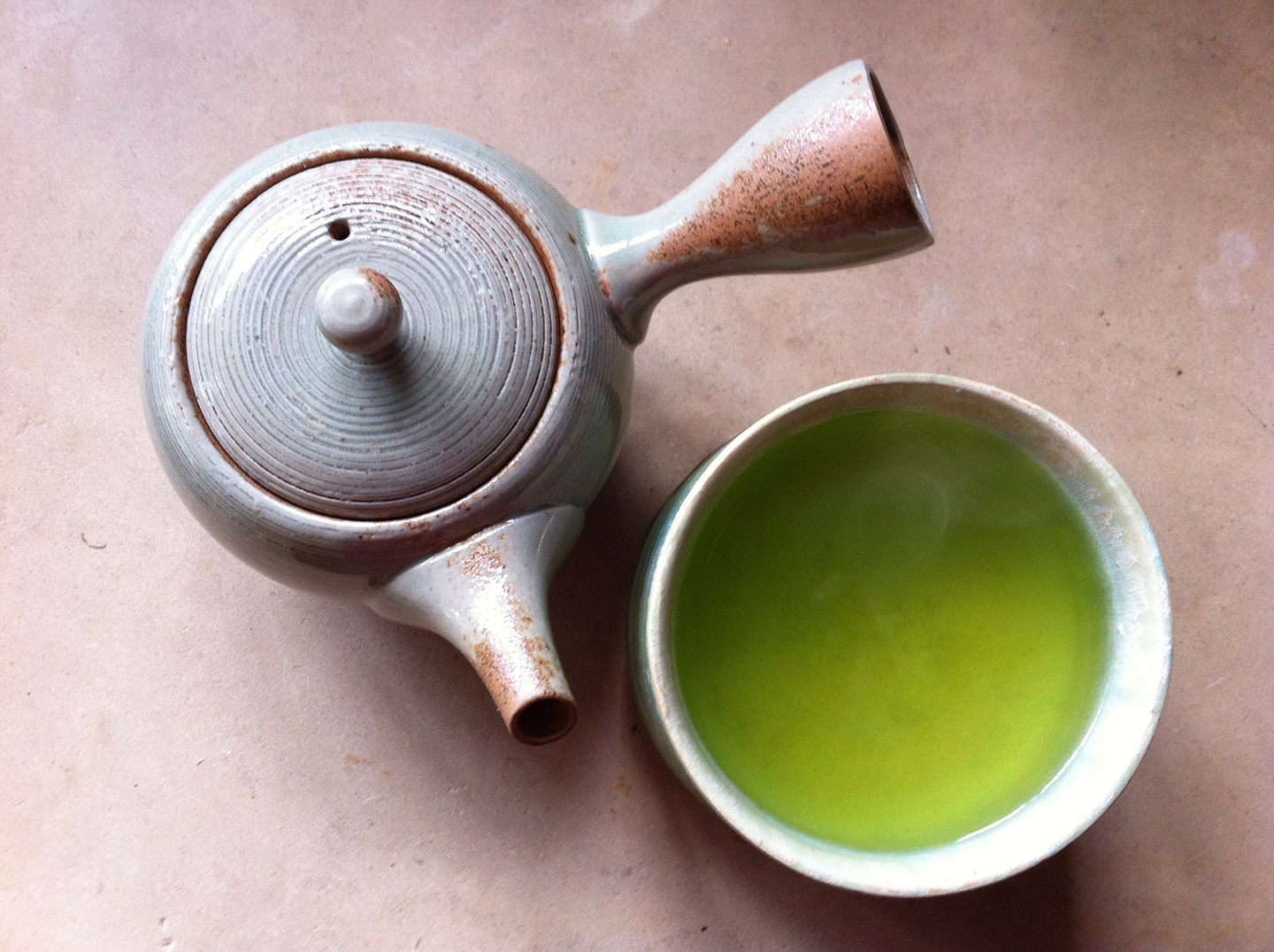
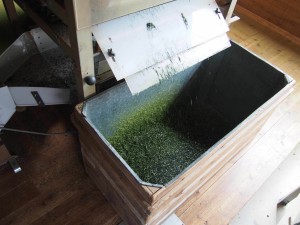 The name of this green tea comes from the adjective ‘arai’ [raw or crude] combined with the noun ‘cha’ [tea]. Literally translated, it means “raw tea”. Unlike most other tea, the leaves for this tea are not subjected to the final heating process and selection. The leaves are processed until they are almost ready (at the point when it is possible to make an infusion from them) and then they are set aside to be processed later to produce a final tea; for example a Kukicha or Sencha. The term Aracha has no indication as to the variety of the leaves nor as to the percentage of stems [Kuki].
The name of this green tea comes from the adjective ‘arai’ [raw or crude] combined with the noun ‘cha’ [tea]. Literally translated, it means “raw tea”. Unlike most other tea, the leaves for this tea are not subjected to the final heating process and selection. The leaves are processed until they are almost ready (at the point when it is possible to make an infusion from them) and then they are set aside to be processed later to produce a final tea; for example a Kukicha or Sencha. The term Aracha has no indication as to the variety of the leaves nor as to the percentage of stems [Kuki].
The term Bancha is used in three very distinct ways. It can be used as a term, which indicates the harvest time, for example ‘ichi-bancha’ [the first harvested tea], ‘ni-bancha’ [second harvest tea], ‘aki-bancha’ [autumn or third harvest tea]. In this case, the term does not say anything specific about the quality of the tea. Secondly, Bancha can have the same meaning as Aracha. Bancha can have the same meaning as Yanagicha, a Japanese green tea harvested at the very end of the first harvest. In normal harvests (first, second and third) only the new shoots are picked, while for the Yanagicha harvest, the cutting height of the harvest machine is adjusted lower to the ground, which means it picks young shoots and stems, together with some older leaves. Therefore Yanagicha combines the freshness of the young shoots and the maturity and higher tannin content of the older leaves.
‘Fukai’ means prolonged and ‘mushi’ means steam and in Fukamushi Sencha the leaves are subjected to a prolonged steaming. The steam penetrates more deeply during this steaming process and substantially modifies the character of tea. In general, tea that is steamed for longer can be distinguished by producing a slightly cloudy infusion and by having a more intense flavour.
Genmaicha is a Japanese green tea mixed with roasted brown rice.“Genmai” literally means “natural rice” or “brown rice”. The quality of a Genmaicha is determined, not only by the quality of the “Genmai” and how it is processed, but also by the quality of the green tea used. Since the Genmaicha is usually drunk in Japan as an everyday tea and is often found in simple restaurants, it is often considered not to be a quality tea. However, there are a few plantations and tea makers who concentrate on producing varieties of high quality Genmaicha. This tea seldom appears on the European market.
Guricha has the same meaning as Tamaryokucha and is a type of rolled tea. However, these varieties are a rarer, very traditional style of tea, compared with the more common varieties, such as Sencha or Gyokuro, which have needle-shaped leaves. In the early twentieth century varieties of green tea with rolled leaves were quite common and in the mid-twentieth century, about 50% of green tea produced in Japan was rolled leaves and 50% needle-shaped. Now, in the early twenty-first century, rolled tea has virtually disappeared, manufactured only by a few small, traditional farmers. The GO EN tea from the Morimoto family is a Guricha.
The Gyokuro is a variety of tea in which plants are placed in the shade for about three weeks before being harvested, thus belonging to a category of tea called Kabusecha, which is a generic term for all teas grown in the shade. However, for a tea to be a Gyokuro, some or all of the following criteria have to be met. As the shading period is very long the nets cannot be placed directly on the plants as the young shoots would grow through the nets. Usually, for Gyokuro shading it has to be built a structure with shading nets at some distance to the tea plants. Finally, the tea plants are expected to be cut down fully after harvest in order to give the plants a rest and therefore increase the quality of the harvest the following year.
As the first Japanese syllable [hou] implies, it is a roasted tea. Nowadays, the production of Houjicha refers to tea leaves that have been steamed and then roasted at a later stage. There are different variants and qualities of Houjicha, depending on the type of the leaves used and the way the leaves are roasted. There are some key factors to this process, such as the roasting temperature and whether the leaves are roasted once or more times, with or without pressure. Another characteristic aspect is related to the size of the green tea leaves. Typically, the Houjicha is produced from the larger autumn harvest leaves [aki-bancha] or winter harvest leaves [fuyu-bancha]. However, very rarely, a high quality Houjicha varieties can also be produced from the first harvest.
Kabusecha is a tea where the plants are grown in the shade. Most of the varieties of green tea Kabusecha, shrubs are kept in the shade for between seven to ten days, but the time spent in the shade can also be longer for certain types of Kabusecha. The Kabuse is not so much a variety of green tea, but a category or set of varieties of green tea, since it is possible to produce many varieties of green tea from shaded tea leaves. The Kabuse Sencha is often referred to simply Kabusecha while other varieties, such as Kukicha can also be produced from leaves grown in the shade. Although such a Kukicha could be designated Kabuse Kukicha, it is often designated as Kukicha without reference to the shading. Sometimes, however, clear designations are also used, such as Kabuse Shiraore. The Gyokuro variety of green tea occupies a prominent place within the category of Kabusecha teas, to the extent that it is assumed that it is grown in the shade for an extended period of time. A period of two weeks in the shade would be short for a Gyokuro, as three weeks is usual period for this variety. Generally, Matcha is also produced from leaves grown in the shade.
Kamairicha is a Japanese tea whose leaves are prepared by being dry heated rather than steamed. The name refers to “Kama”, which means an iron pan and thus Kamairicha means “the tea of the pan”. Nowadays, it is very rare to prepare the Kamairicha by hand in a pan. Only very occasionally this method is used and then only for teaching purposes or championships. At one point machines were used for this production process but even that is rare nowadays. The amount of Kamairicha produced is only 1% of the total Japanese green tea production.
Although [Kuki] denotes the stem of the fresh sprouts of the tea plant, there are many varieties of Kukicha that comprise mainly stems and leaves. Normally, during the harvest period, the leaves are harvested with the stems. After a certain number of manufacturing steps, the harvested material is divided into different categories, by means of a vibrating sieve, a fan or an electromagnetic cylinder. Generally, the best teas come from the smaller/finer leaves and the more simple qualities come from the larger/coarser leaves. The different components separated by these processes often have surprising taste variations. For example, teas from small leaves and young, green stems (Kuki) may have a perfume and a very fresh flavour. The stems can have a particular character of their own that can make teas with a high proportion of Kuki, especially attractive. In varieties of Kukicha from the earliest harvests, it is possible to find citrus notes, even from the coarser, larger leaves. The Kukicha varieties from the later harvests, often have very round nuances, with a slight touch of wood. Sometimes, the term Karigane is also used to distinguish especially fine Kukicha qualities, which derive from first harvest or Gyokuro or Kabuse Sencha production.
The word Matcha is derived from two words. While the second word, ‘cha’, clearly means the word tea, the first word is markedly more interesting. The first word in Japanese comes from the word ‘matsu’ and in Chinese from the word ‘mo’, however, both of these words simply mean “dust”. The reason it makes sense to refer to the Chinese term ‘mo-cha’ is that this is one of the several varieties of green tea with its origins in China and which remains close to its original presentation. In the beginning Mocha was simply a tea that was ground (in the same way that herbs were ground for medicinal purposes) and then made into compressed capsules to be subsequently taken mixed with water. The innovation of grinding Mocha from steamed tea leaves took place only during the Song Dynasty (960-1279). While steaming tea leaves were banned in China (which lead to the process of heating the dry leaves) the tradition of drinking tea fine powder (‘matsu-cha’, a contraction of syllables, ‘Matcha’) arrived in Japan.
The new definition of Matcha, is a tea used in the tea ceremony, which has a grown in the shade for three to four weeks and is ground into a powder using very heavy millstones. However, the term Matcha is often considered synonymous with ‘funmatsucha’, which means simply ground tea; irrespective as to whether it was grown in the shade or how it was ground. The noblest varieties of Matcha, used in the tea ceremony, come from the Uji tea-growing region, near the ancient capital, Kyoto; although simpler, fine powder teas are also produced in Uji.
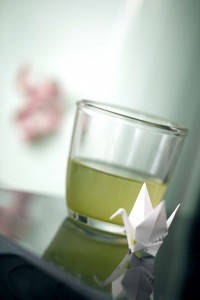 “Mizu” is a Japanese word that means cold water, as opposed to “Oyu” which means hot water. Therefore, Mizudashi Sencha is a green tea created for cold water infusions. However, Mizudashi Sencha can be prepared in two different ways. Firstly, it can be made from a green tea specially selected for being prepared with cold water, whereby extremely thin leaves are steamed for longer periods [Fukamushi]. This type of green tea is designed for cold infusions that do just require an infusion time of some minutes. Secondly, this infusion type could be made with any green tea and prepared with cold water and be left to infuse for some hours. However, if a variety with more stable and firm leaves is used, it may be best to leave the infusion overnight, for example, this infusion could be undertaken in a glass jar in the refrigerator.
“Mizu” is a Japanese word that means cold water, as opposed to “Oyu” which means hot water. Therefore, Mizudashi Sencha is a green tea created for cold water infusions. However, Mizudashi Sencha can be prepared in two different ways. Firstly, it can be made from a green tea specially selected for being prepared with cold water, whereby extremely thin leaves are steamed for longer periods [Fukamushi]. This type of green tea is designed for cold infusions that do just require an infusion time of some minutes. Secondly, this infusion type could be made with any green tea and prepared with cold water and be left to infuse for some hours. However, if a variety with more stable and firm leaves is used, it may be best to leave the infusion overnight, for example, this infusion could be undertaken in a glass jar in the refrigerator.
The term ‘Sencha’ has three different meanings: Firstly, it can refer to a broad category of green tea varieties treated by steaming, as ‘Sencha’ literally means ‘steamed tea’. Within the category of steamed green tea, there are several subcategories, such as steamed Guricha (a steamed green tea whose leaves have a coiled form), and Matcha (fine tea powder). Obviously, within these various subcategories, there are other subdivisions of shade treated tea [Kabusecha], such as Gyokuro. The determining factor is that, after the harvest, the teas are steamed and not heated to dry.
Secondly, the term ‘Sencha’ is also employed as a subcategory of green tea whereby the leaves are rolled into a needle-shape, irrespective as to whether they are steamed or not. This implies that powdered green tea varieties such as Matcha, do not belong to the “Sencha” subcategory “ and neither do all teas with curly leaves. Thus, all the Guricha varieties, whether they are dry heated or steamed do not belong to the Sencha category.
Finally, from time to time, the term Sencha is also used to describe a unique variety of tea, which is a steamed green tea, where the leaves are rolled into a needle-shaped but were not then subsequently roasted or ground. In addition, this tea does not contain a significant number of stems, nor was it grown in the shade. Following this classification, there is an implication that the Matcha varieties, Houjicha, Kukicha and Kabusecha are not types of Sencha, even if they were steamed and rolled into needle-shaped. In this case, the Sencha is differentiated from the following production processes: steaming [Matcha], toasting [Houjicha], selecting [Kukicha] and shading [Kabuse].
“Shincha” literally means “new tea”. It is a tea, which is picked just before the first main harvest. Thus in the Shincha harvest, only the youngest shoots are picked and at a very early stage of development. The production of this tea is low, since very few leaves are available to be picked. It is for this reason and also because the Shincha varieties are subjected to a very brief final heating, that this tea attracts by its intense freshness.
The tea Guricha – traditional green tea – is sometimes also called Tamaryokucha. At this page you can read more on Guricha.
Tea leaves naturally contain certain enzymes, which can make the leaves brown shortly after the leaves have been harvested. Green tea is a tea whereby these enzymes have been inhibited and the oxidation of the leaves has been prevented. To inhibit this oxidation process, the tea leaves must be heated, either by steam or by a dry heat. If the leaves are not heated soon after being harvested, for example, if the route from the tea plantation to the place of production is too long, the leaves become bruised or crushed and the leaves can start to oxidize.
With regards to the history of steaming leaves, it is important to note that even before tea production started in Japan; in China, it was standard practice to steam the leaves. However, these days, steaming leaves is very unusual in China, and most Chinese green teas are produced by dry heating the leaves.
In Japan, however, the opposite occurred, in that, at the beginning of the 20th century, dry heating (Kamairi) was the normal method for green tea production. Then, in the mid-20th century, about half of the tea was steamed. However, the Japanese engineering industry has made great advances in steaming machinery, so that today only about one percent of green tea produced in Japan is dry heated.
One of the advantages of steaming, as opposed to dry heating (Kamairi), is the fact that the heat from the steam penetrates deeper into the leaves, thus opening the leaf structure and increasing its porosity. If this long steaming period is taken to the extreme, an exceptionally porous and very intense tea (Fukamushi) is produced, whose leaves are quite unstable. During the infusion of this tea, the hot water immediately penetrates the leaves, which rapidly release their substances into the infusion and produce a more intense colour. Thus the longer the tea is steamed, the green colour becomes darker and the flavour becomes more intense.
 Português
Português English
English Español
Español